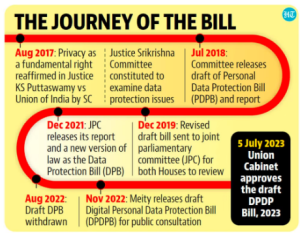Context:
An Inter Departmental Group (IDG) of officials of the Reserve Bank of India (RBI) have in a report cautioned that internationalisation may result in increased volatility in the rupee’s exchange rate in the initial stages.
About Inter-Departmental Group (IDG):
Key Recommendations of the Group:
Internationalisation of Rupee:
Efforts to Internationalise Rupees:
Benefits of Internationalisation of Rupee:
Implications of Internationalisation:
News Source: Indian Express
Context:
A study was published in “Science Advances” that offered to help accelerate healing of chronic wounds– using a wearable, wireless, mechanically flexible smart bandage as big as a finger.
About Smart Bandage:
How does the Smart Bandage work?
Benefits:
Limitations:
News Source: The Hindu
Context:
Taiwan will be establishing the ‘Taipei Economic and Cultural Centre (TECC) in Mumbai.
Objectives of TECC:
| Additional Information:
About New Southbound Policy:
|
News Source: Financial Express
Context:
Cucumber Mosaic Virus (CMV) and Tomato Mosaic Virus (ToMV) have impacted crops in Karnataka and Maharashtra respectively.
About CMV and ToMV:
How do these two viruses spread?
Ways to Control the Virus Spread:
News Source: Indian Express
Context:
The International Seabed Authority is preparing to resume negotiations that could open the international seabed for mining, including for materials critical for the green energy transition.
About Deep Sea Mining:
Regulation of Deep Sea Mining
Environmental Concerns
Conclusion:
| Additional Information
About UNCLOS
International Seabed Authority
|
News Source: Indian Express
Context:
The Ministry of Home Affairs launched the Scheme for ‘expansion and modernization of Fire Services in the states’.
About ‘Scheme for Expansion and Modernization of Fire Services in the States’:
News Source: PIB
Context:
The Seventh edition of the bilateral Japan-India Maritime Exercise 2023 (JIMEX 23) will be hosted by the Indian Navy, at Visakhapatnam from 05 -10 July 2023.
About JIMEX 23:
News Source: PIB
Context:
Recently, the Union Cabinet cleared the Digital Personal Data Protection (DPDP) Bill.
| PYQ
Q. Data security has assumed significant importance in the digitised world due to rising cyber crimes. The Justice B.N. Srikrishna Committee Report addresses issues related to data security. What, in your view, are the strengths and weaknesses of the Report relating to protection of personal data in cyberspace? (2018) |
About Data and Data Protection:

Image Source: Hindustan Times

Image Source: The Indian Express
Need for Data Protection:

Image Source: Mckinsey Global Institute Report
Key Features of Digital Personal Data Protection (DPDP) Bill 2022:
The Significance of the Digital Personal Data Protection Bill, 2022:
|
Concerns Associated with the Bill:
| Section 8(1)(j) of the RTI: It protects privacy by allowing the denial of personal information if it has no relationship to public activity or interest or if its disclosure would cause unwarranted invasion of privacy. |
Conclusion:
News Source: The Hindu
SC Verdict on Newsclick Shows Adherence to Due Pro...
Stay Invested: On Chabahar and India-Iran Relation...
Credit Rating Agencies, Impact on India’s De...
Catapulting Indian Biopharma Industry
Globalisation Under Threat, US Import Tariffs Have...
Global Report on Hypertension, Global Insights and...
<div class="new-fform">
</div>
